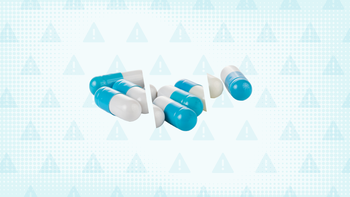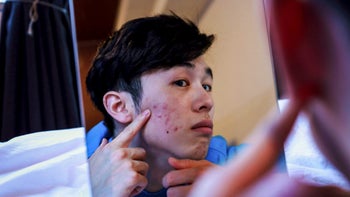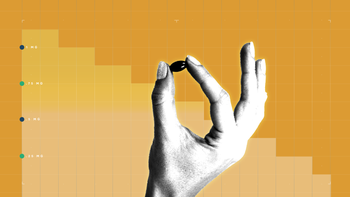
Too Old for Breakouts? Here’s How to Treat Adult Acne
Key takeaways:
Getting acne as an adult is pretty common. And it may not respond to typical treatments.
Adult-onset acne is more likely to be caused by changing hormones and underlying health conditions, like polycystic ovary syndrome.
The best acne treatments for adults may include hormone therapies, like birth control pills or spironolactone.

Most people think of acne as an unfortunate rite of passage for teenagers. After all, acne affects up to 9 in 10 adolescents. But acne can be an issue for adults, too. It typically affects women more so than men. Up to half of women and 42% of men experience adult acne.
Just like teenagers, adults can struggle with the emotional and psychological distress caused by acne. Up to 2 in 5 adults with acne may have a mental health condition. Like teens, they can struggle with a negative body image and poor self-esteem. They can also experience discrimination in the workplace and in other social settings.
Some studies even suggest the quality of life of adults with acne is more affected than teens with acne. The good news is there are treatments that can help.
One Prescription + One Pump + Once a Day
Introducing CABTREO: the treatment that has clindamycin phosphate, adapalene, and benzoyl peroxide all in one topical application. Now cash pay patients pay no more than $100 using GoodRx.

What causes adult acne?
In general, acne happens when pores (the hair follicles in the skin) become clogged with dead skin cells, excess skin oil, and bacteria. Genes, changing hormone levels, and diet may all contribute to why some people get acne, especially teenagers.
The more likely causes of adult-onset acne are changing hormones, certain health conditions, and medications.
Making matters worse, adult skin is slower to regenerate than teenage skin. So acne scars can last for longer in adults and may take more time to heal.
Hormonal fluctuations
As teenagers transition into adulthood, hormones tend to level off and become more steady, which typically results in less acne. But, sometimes, hormonal fluctuations can continue in adulthood and acne can flare up again — even in people who’ve never had acne.
Typically, this happens with:
Menstruation
Pregnancy
In fact, studies have suggested that almost 7 in 10 women report worsening acne right before they have their periods.
In both men and women, physical and emotional stress can also affect hormone levels and cause acne breakouts.
Polycystic ovary syndrome
Polycystic ovary syndrome (PCOS) is a condition in women that causes testosterone levels to rise, which causes acne. Other symptoms include irregular menstrual cycles and hirsutism (abnormal hair growth on the face or body). If you experience any of these symptoms, see your gynecologist to check your hormone levels.
There are other, rarer conditions that can raise your androgen hormone levels and cause acne too. But PCOS is by far the most common.
Medications
Medications and supplements usually don’t cause acne as a side effect, but it’s important to be aware that some can.
Examples of medications that can cause acne include:
Testosterone pills/supplements
Some progestin birth control pills
Adult acne treatments
Since the effects of acne can be more than skin deep, don’t be afraid to talk to your provider if your acne is affecting your quality of life. Many people with acne can feel down, and talking about it can help you get the treatment you need.
How you treat your acne will depend on the type of acne you have, how severe it is, and what’s causing it. No matter what type of acne you have, the first step to treatment is to develop a good skin-care routine and healthy skin habits. Below are a few examples of medications and skin-care products your healthcare provider might recommend. Generally, you’ll use topical medications first. It can help to combine several different medications. For more severe cases, you may need pills, like antibiotics, hormonal therapies, or even oral retinoids.
Benzoyl peroxide
Benzoyl peroxide comes in different strengths and as a:
Liquid
Foam
Cream
Lotion
Gel
Cloth wipe
It works as an antimicrobial to kill the bacteria that cause acne. It’s usually used twice a day along with other treatments, like antibiotics (pills or creams) and retinoids. Benzoyl peroxide can cause some skin irritation, especially when you first start using it. If this happens, try a lower strength, and use it less frequently until your skin gets used to it.
Salicylic acid
Salicylic acid helps treat whiteheads and blackheads, and it can also lessen oil production in the skin. It’s available over the counter (OTC) in different forms, like washes, gels, and creams. You can use it twice a day and along with other treatments, like benzoyl peroxide and retinoids.
But salicylic acid can irritate the skin, so it’s best to slowly bring it into your routine — especially if you use other medications that can cause irritation (like retinoids).
Azelaic acid
Azelaic acid comes as a cream, foam, or gel, and it’s available in lower strengths OTC and as a higher-strength prescription. It’s not clear exactly how it works, but it likely kills acne-causing bacteria on the skin. Azelaic acid is naturally found in whole-grain cereals, barley, rye, and some animal products.
Azelaic acid may cause some redness or irritation when you start using it, so it’s best to start once a day and then work your way up to twice a day. You can also use it along with other acne medications. If you notice skin irritation, try a lower strength, and use it less frequently at first.
Topical retinoids
Topical retinoids, like tretinoin, adapalene, and tazarotene, are available as creams, gels, and lotions. They’re the cornerstone of acne treatment. They work by helping skin shed old skin cells faster and promoting new skin-cell growth, which reduces the clogged pores that cause acne. Topical retinoids also help smooth wrinkles and even out skin tone, which can be helpful in older skin.
Topical retinoids work very well at fighting acne, but they can cause irritation when you first start using them. You’ll also need to be patient: It can take 4 to 6 weeks before you start to see results.
Here are some tips to help when you start using a retinoid:
Treat your whole face (retinoids are not a spot treatment).
Use a small amount — about the size of a green pea — for your whole face.
Apply it every other night for 2 weeks. If your skin isn’t getting irritated, increase to nightly use.
Use a moisturizer afterward.
Use sunscreen in the morning (the retinoid can make your skin more sensitive to the sun).
If your skin gets red or irritated, decrease how often you’re applying it until the irritation improves.
Antibiotics
Topical antibiotics (creams or lotions), like clindamycin and erythromycin, can help by killing acne-causing bacteria on the skin.
They’re available in different strengths. They’re often combined in other topical products, like in Benzaclin (clindamycin / benzoyl peroxide). To get more severe acne under control, you may need a short course of antibiotic pills along with topical antibiotics.
Hormonal treatments
For female adults who aren’t pregnant, hormonal fluctuations during menstruation and around menopause can be a significant cause of acne. Often the best way to treat this type of acne is to use these hormonal treatments:
Birth control pills (oral contraceptives) that combine estrogen and progestin (like Yaz and Beyaz) work the best because they help lower the amount of testosterone in the body, which improves acne. Progestin-only pills (like Camila) are chemically similar to testosterone, so they can actually make acne worse in some people. It can take a few months before you start to see an improvement with birth control pills. And you may have to try a few different options before finding the right one for you.
Spironolactone (Aldactone) is a medication that treats high blood pressure. But it can also be used off-label to treat hormonal acne, including during perimenopause and menopause. It works by lowering the amount of testosterone in the body, which helps improve acne. Some people start noticing an improvement in their acne within a few weeks of starting spironolactone. The longer you take it, the more improvement you tend to have.
Acne can also develop when hormones fluctuate during pregnancy. Not all medications are safe to use during pregnancy, so it’s best to check with your provider before starting an acne treatment plan on your own.
How to prevent adult acne
No matter your age, there are steps you can take to lower the chance of developing acne in the first place. To help keep pimples at bay, work these simple steps into your daily routine:
Wash your face twice a day and after sweating.
Avoid harsh soaps and other irritants, like scrubs and coarse washcloths.
Use a non-comedogenic light moisturizer, makeup, and SPF (this means they won’t clog pores).
Exercise regularly, and take steps to lower your stress levels as much as possible.
If using a face mask, choose cotton or natural fabric, and wash it after each use.
Don’t touch your face, and don’t pick or pop pimples if you get them.
Focus on a whole-foods diet that’s low in sugar and includes omega-3 fats.
If milk and other dairy products are a trigger for you, try cutting them out.
The bottom line
Getting acne as an adult can be frustrating, and it can have a real effect on your emotional well-being and mental health. Adult acne is actually pretty common, and it’s most likely to be caused by fluctuating hormones, underlying health conditions, and medications. But acne is treatable, and the treatment strategy focuses on addressing the underlying cause. Talk to your provider about your specific situation to see what the best treatment option is best for you.
Why trust our experts?


References
American Academy of Dermatology Association. (n.d.). Adult acne.
Collier, C. N., et al. (2008). The prevalence of acne in adults 20 years and older. Journal of the American Academy of Dermatology.
Husein-ElAhmed, H. (2015). Management of acne vulgaris with hormonal therapies in adult female patients. Dermatologic Therapy.
Ramos-e-Silva, M., et al. (2015). Acne in women. British Journal of Dermatology.
Skroza, N., et al. (2018). Adult acne versus adolescent acne. The Journal of Clinical and Aesthetic Dermatology.

























